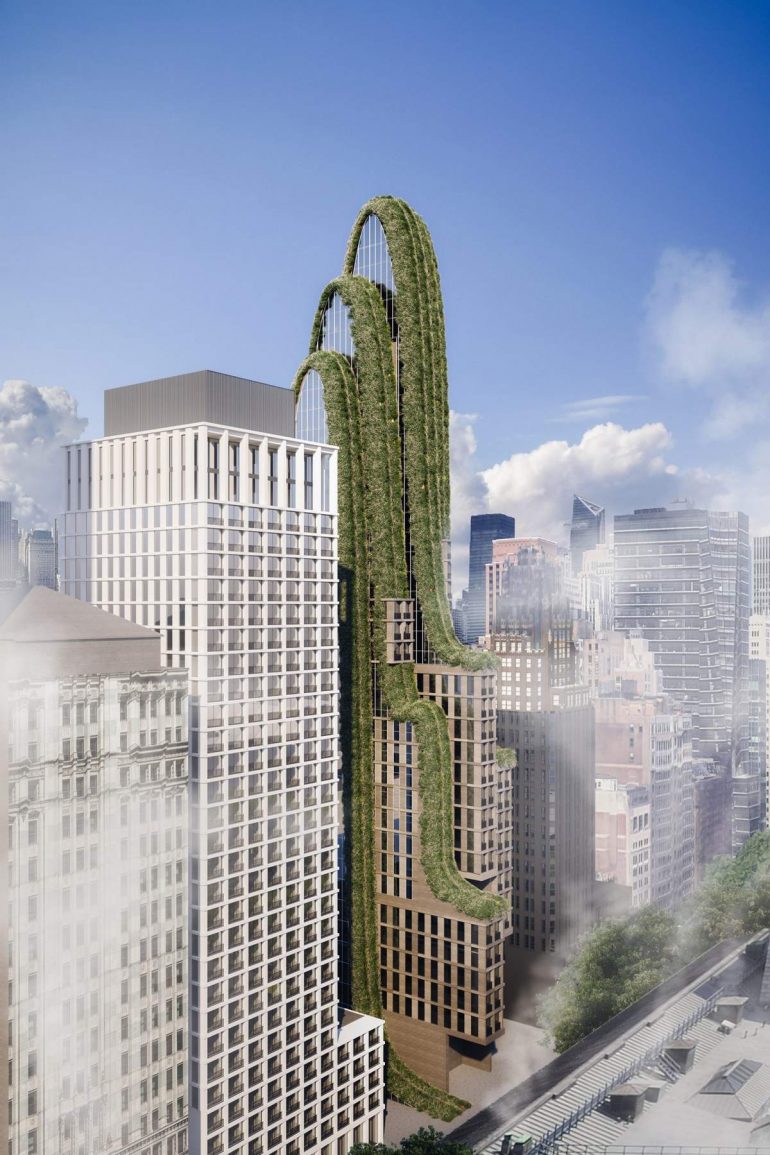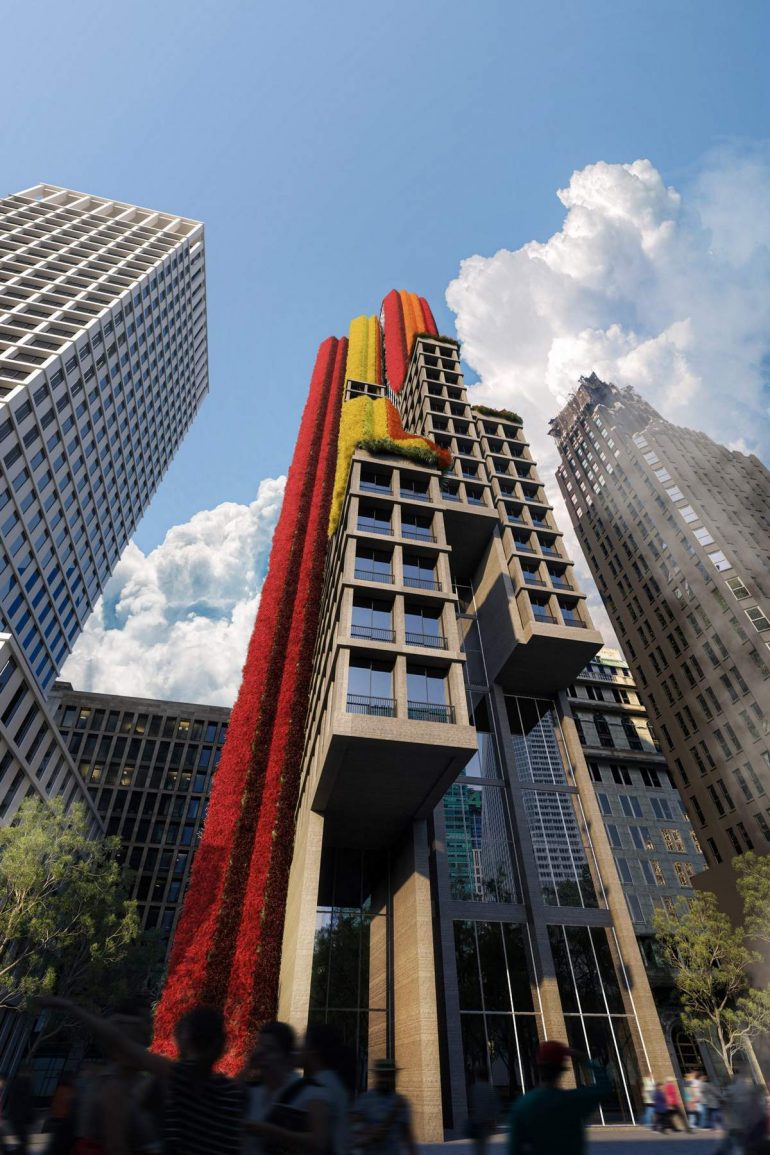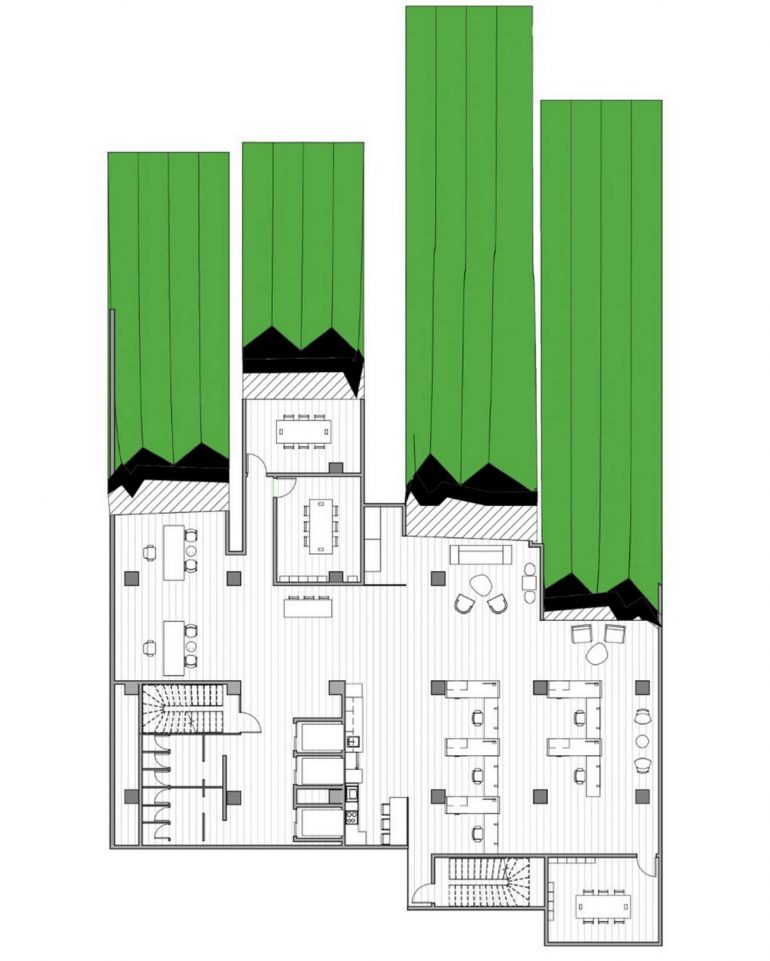Do the soothing sights of flowers fit a modern concrete world? Perhaps in a garden patch would be an acceptable answer. Thanks to the extraordinary vision of US firm Studio Vural the flower power won’t be restricted to gardens but will adorn a towering 521ft-tall $350million New York skyscraper. The flower of choice is Lilly which is also the name bestowed on the 41-story tower proposed to be constructed on Bryant Park in Midtown Manhattan. The New York skyline will include a colorful bouquet of 265,000 sq. ft promoting sustainability and low-energy design. The building that appears glazed with Asian lilies is inspired by the steep rice fields found in parts of Asia, “where every square inch of fertile soil matters,” said Selim Vural, founder of Brooklyn-based Studio Vural.
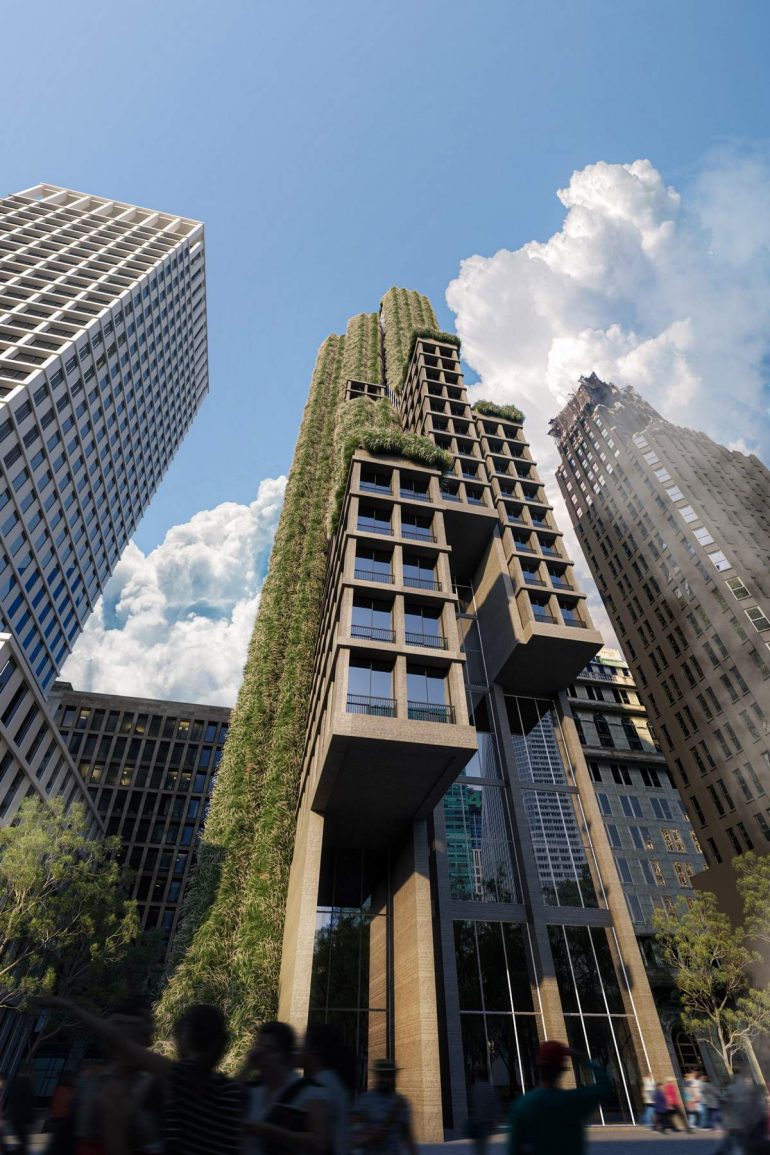
How would flowers survive the harsh weather and continue to blossom for days? The designer explained the planting system consists of lightweight, concrete beds supported by a steel frame. Water would come from rainwater, greywater, and city-supplied water if required. Moreover, the skyscraper is equipped with a doorway every ten floors for gutsy landscapers to tend to the vertical garden using ladders and safety belts. These landscapers can rely on drones to closely check the conditions of the lilies before nursing them at nauseating heights. As per Selim Vural, ‘Asian lilies are resilient enough to survive the winter. As we provide the right conditions, the lilies will thrive.”
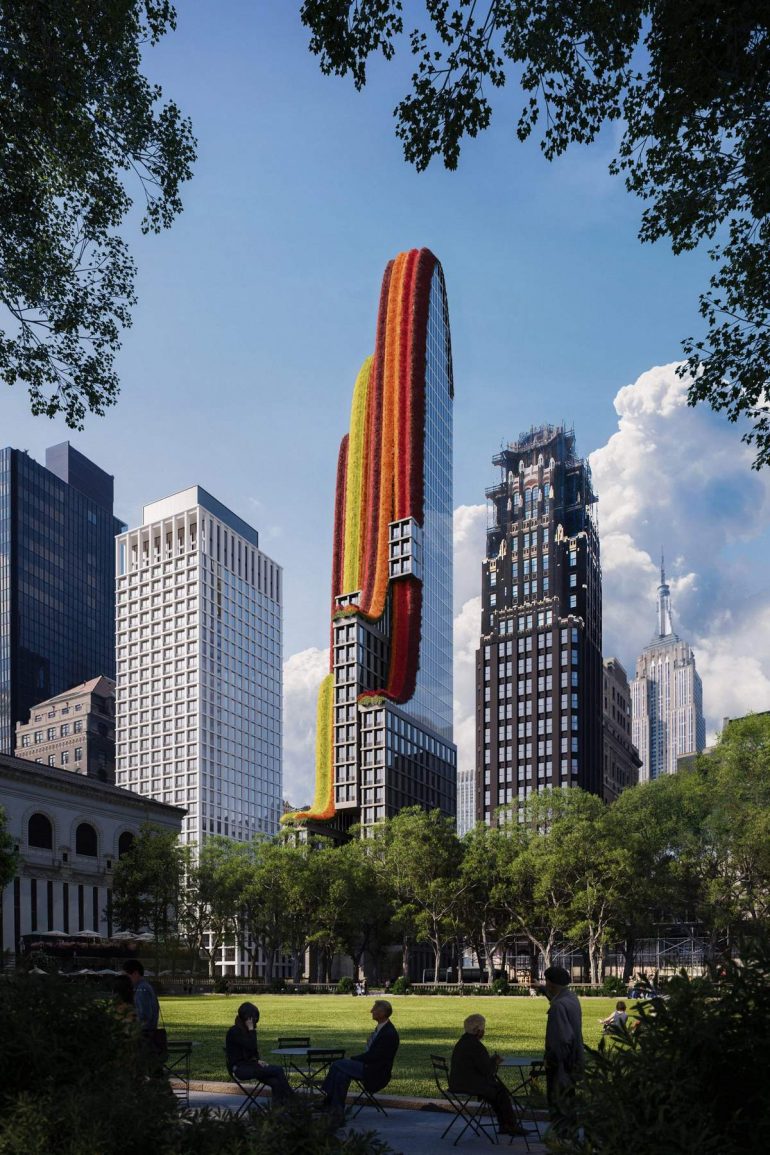
He continued, “Not only do flowers offer a beautiful natural aesthetic, but flower beds also offer natural insulation and carbon absorption. The more plants, the cleaner the air at the source of the pollution. Imagine Midtown Manhattan smelling like perfume!” The mixed-use skyscraper would consist of 18 residential floors and 23 commercial floors. Vural is not a man that only talks the talk. He looks after his 1,000-square-foot rooftop, where he grows vegetables, fruits, and flowers and dubs lilies his favorite urban flower. Timeout shared, “It’s a very resilient and hardy plant,” said Vural. He added, “They proliferate, give new bulbs, and spread around in the garden.”
[Via: Dezeen]

